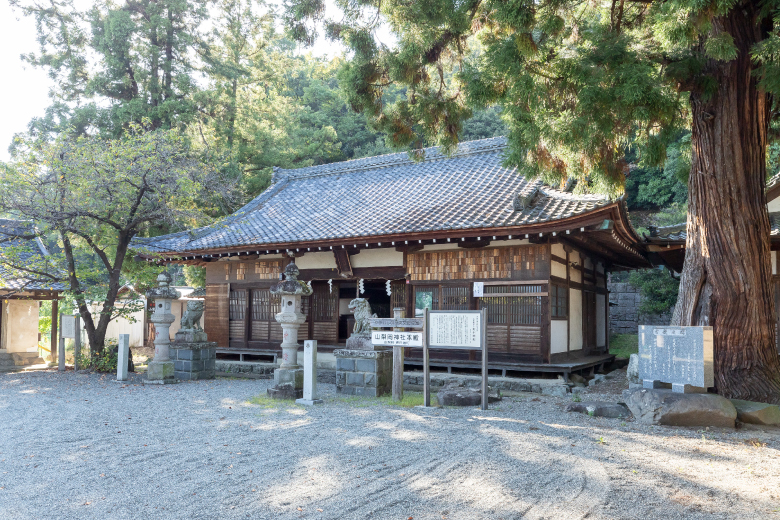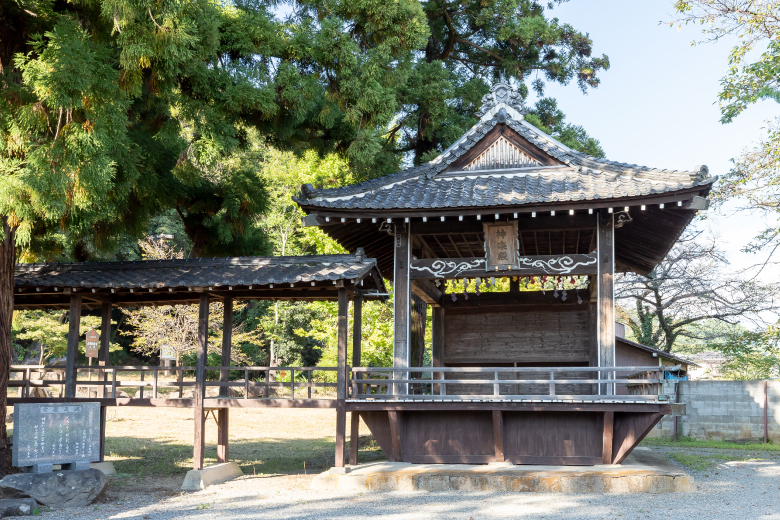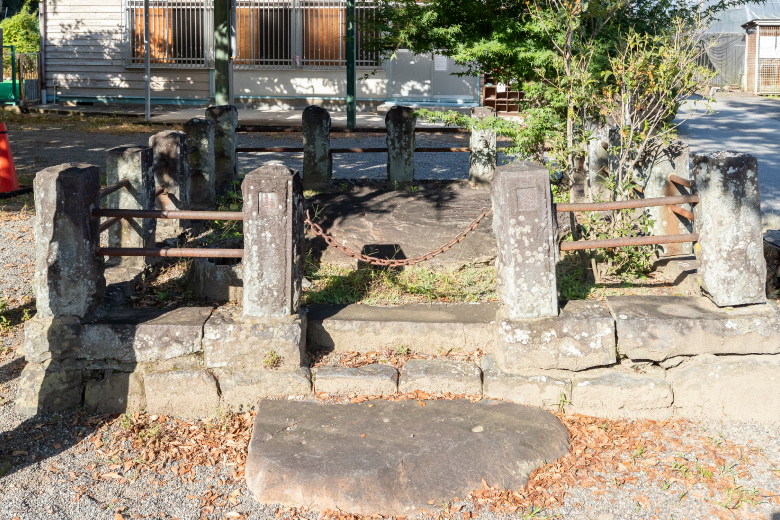Yamanashioka-jinja Shrine, located at the foot of Mount Mimuroyama in Kasugai-cho, Fuefuki City, is an old shrine that is listed in the Engishiki Jinmyocho roster of the Heian Period (794–1185). It was founded by Imperial ordinance during the reign of Emperor Sujin, to subdue the epidemic that had been spreading throughout the country and to control disasters. During the reign of Emperor Seimu, it was relocated to its present location by cutting open a forest of gregarious Yamanashi pear trees and was thus named Yamanashioka-jinja. This is also the origin of the name of this region, Yamanashi Province, as well as of name of the prefecture, Yamanashi Prefecture.
The main building was built by a Hida craftsman in the late Muromachi Period (1336–1573). It is a Kasuga-zukuri style of architecture with hip rafters, topped with a simple wood-shingled roof. It was designated a national Important Cultural Property in 1907. In ancient times, the shrine was called Yamanashi Myojin and flourished as a place of prayer of the Takeda Clan for many generations. A visitation letter by Takeda Shingen and a copy of a 1544 prohibition edict board is still held in safekeeping.
The Daitai Kagura performance that has been handed down through the years in the shrine is a lineage of the Izumo Kagura, which expresses a Kojiki legend. Shingen is said to have offered this performance to pray for victory before going into battle. There are 24 types of dances, but the most famous is the Kumemai, which features four performers who dance gallantly with a sword in one hand. Daitai Kagura is designated an Intangible Folk Cultural Property of Yamanashi Prefecture, and is performed as an offering in the annual spring festival held on April 4 and 5 every year.
The old wisteria tree on the grounds of the shrine is also designated a Natural Monument of Fuefuki City, producing beautiful purple flowers that hang to lengths of 60cm or so in early May.
The main building was built by a Hida craftsman in the late Muromachi Period (1336–1573). It is a Kasuga-zukuri style of architecture with hip rafters, topped with a simple wood-shingled roof. It was designated a national Important Cultural Property in 1907. In ancient times, the shrine was called Yamanashi Myojin and flourished as a place of prayer of the Takeda Clan for many generations. A visitation letter by Takeda Shingen and a copy of a 1544 prohibition edict board is still held in safekeeping.
The Daitai Kagura performance that has been handed down through the years in the shrine is a lineage of the Izumo Kagura, which expresses a Kojiki legend. Shingen is said to have offered this performance to pray for victory before going into battle. There are 24 types of dances, but the most famous is the Kumemai, which features four performers who dance gallantly with a sword in one hand. Daitai Kagura is designated an Intangible Folk Cultural Property of Yamanashi Prefecture, and is performed as an offering in the annual spring festival held on April 4 and 5 every year.
The old wisteria tree on the grounds of the shrine is also designated a Natural Monument of Fuefuki City, producing beautiful purple flowers that hang to lengths of 60cm or so in early May.
COURSE MAP
Let's go to the next spot!
- 550m / 2min by bicycle / 7min on foot
- 04Houn-ji Temple


